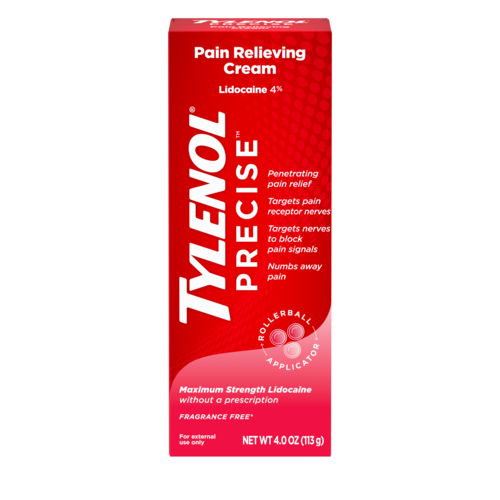Most adults experience back pain at some point in their life.1 Back pain can feel like a constant, dull ache or a sharp, shooting pain. While it’s more common in older adults, back pain can strike at any age.2
Understanding the common causes of back pain can empower you to help prevent and manage the pain in the best possible way.
Common Causes of Back Pain in Young Adults
Back pain doesn’t wait until you’re older. Young adults might experience back pain for a number of reasons.
1. Muscle Strains and Sprains
Back pain from a muscle strain or sprain is caused when a muscle, tendon, or ligament that supports your spine is stretched too much and tears. These injuries can be very painful. People with back strains or sprains may have pain that gets worse when they move, difficulty moving, and muscle cramps or spasms.3
Back pain from a strained muscle can occur suddenly or develop over a long period of time.
2. Trauma or Accidents
A sudden trauma, like a car accident or fall, can cause back injuries such as sprains or strains, vertebral fractures, or herniated disks.4
If you experience a back injury from a car accident, you may be more likely to have low back pain in the future.5
3. Sport or Exercise Injuries
You don’t have to be an athlete to get lower back pain from a sports injury. Repetitive movements such as squats or pushing and pulling in weightlifting can cause sprains or strains in your lower back.6
Sudden twisting movements in other sports, like golf, tennis, or basketball, might also cause back injuries.7
4. Stress
High levels of stress are associated with low back pain. Stress might cause back pain by affecting how your body processes pain.8
5. Improper Lifting
Back injuries from lifting can happen if you lift a heavy object improperly or attempt to lift something too heavy for you. Weightlifting injuries, such as deadlifting, can also cause lower back injuries.9
6. Job-Related Injuries
You might expect that a physical job with lots of lifting, pushing, or pulling might cause a job-related injury. However, working from home can also cause back pain from sitting at a desk for too long.10
7. Sedentary Lifestyle
A sedentary lifestyle can cause back pain by increasing your risk of injury. A lack of exercise and movement can make you stiffer and less flexible, making it more likely that you will injure your back. Exercise, especially those that work out the core muscles of your abdomen and back, can help prevent back pain by supporting your spine.3
8. Poor Posture
Poor posture can cause upper back pain or lower back pain by weakening the muscles in your back and putting more pressure on areas that aren’t suited for it. Poor posture can include slouching, rounded shoulders, or leaning forward or backward.11
9. Weight Gain
Weight gain can cause back pain by putting more stress on your spine. Research shows that obesity increases your risk of back pain.12
10. Everyday Parenting
Back pain for new moms and new dads is common. Many of the parenting activities you do every day — like bending and heavy lifting — can cause poor posture and back pain.
Other Common Back Pain Causes
1. Arthritis
Arthritis can affect any part of the spine but is most common in the lower back or neck.13
2. Disc Problems or Hernia
The gel-filled disks between each vertebra in your spine can break down due to age or injury and cause pain when they don’t absorb shock as well.14
3. Genetics
Some people are born with an increased risk of experiencing back pain.15
4. Aging
Your risk of back pain increases as you get older. Part of this increase is due to the higher risk of medical conditions that can cause back pain, such as osteoporosis, arthritis, and obesity.2
5. Fibromyalgia
People with fibromyalgia have an increased sensitivity to pain and can experience pain anywhere on their body, including the back.16
How To Relieve and Help Prevent Back Pain
You don’t have to suffer from back pain. There are some things you can do to relieve and help prevent your back pain, such as:2
- Stay active — regular physical activity can help strengthen the muscles that support your spine
- Eat a healthy diet — include plenty of calcium and vitamin D in your diet to keep your bones strong
- Maintain good posture — avoid slouching and stretch regularly to improve your posture
- Achieve a healthy weight — if you are overweight, losing even just a few pounds can reduce your risk of back pain12
- Learn how to lift heavy objects properly — use your legs and abdominal muscles instead of your back when lifting
- Arrange your workspace — set up your workspace to ease the stress on your back and help prevent slouching10
- Sleep Smart – if back pain is worse at night, choosing a firm mattress and sleeping with a pillow between your knees (for side sleepers) or under them (for back sleepers) may help
Treatments for back pain can include:2
- Oral pain relievers — pain relievers that you take by mouth that work throughout your body, such as acetaminophen (Tylenol®)
- Topical pain relievers — pain relievers you apply directly to the skin
- Physical therapy — to help strengthen the muscles that support your back
If you have questions or concerns or if you have symptoms that don’t improve or go away, talk to your doctor right away.2






All Fields required, unless otherwise indicated
Will be used as your user name
By submitting your information above, you agree that the information you provide will be governed by our site's Privacy Policy.